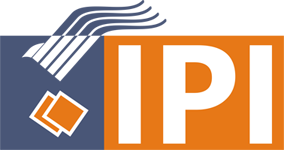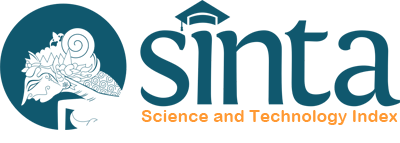Author Guidelines
- The accepted manuscript in Jurnal Visi Komunikasi is the manuscript, which: (1) is original, not a result of plagiarism, and has novelty; (2) has never been published, or in the process of publishing, in other media; and (3) is in the field of communication studies.
- Manuscript is written in Bahasa Indonesia or English using Microsoft Word, Times New Roman, 12 pts, double-spaced, margin 2.5 cm, with page number on the bottom right.
- Manuscript should be 20-30 pages long.
- For the promptness of publication process, it is recommended that all manuscripts in English has been proof read before submitted or uploaded to the system. The certificate/proof of proofreading can be sent to the editor via email [email protected].
- Manuscript must be submitted online via OJS or email.
- Author must register as AUTHOR in OJS JIK to submit the manuscript.
FORMAT
RESEARCH-BASED MANUSCRIPT
- Title
- Author
- Institution
- Institution’s address
- E-mail address
- Abstract
- Keywords
- Introduction
- Method
- Findings
- Discussion
- Conclusion
- References
CONCEPTUAL MANUSCRIPT
- Title
- Author
- Institution
- Institution’s address
- E-mail address
- Abstract
- Keywords
- Introduction
- Substance/Discussion
- Closing
- References
MANUSCRIPT’S FORMAT DESCRIPTION
Title - Title should be written on the center of the page, with 16 points font. Title in Bahasa Indonesia should not exceed 12 words, in English should not exceed 10 words.
Author, Institution, and Correspondence Address - The name of the author is written without academic degree. Institution’s name is the institution, where the manuscript is made, and posited under the title. Institution’s address must be complete written, including the postcode. The email address refers to the first author’s email. Editors only correspond with the first-named author.
Abstract and keywords - Abstract is written both in Bahasa Indonesia and English, with maximum 100 words, and 3-5 keywords. Abstract should contain background, problem, aim, method/concept, result, and conclusion.
Introduction part for research-based manuscript contains of background, literature reviews, research question(s), and aim(s) of the research. Introduction part for conceptual manuscript contains the description of problem’s key context, including the main argument of the topic/problem. Introduction part does not use subtitle.
METHOD - This part contains a description on the research design, data source, and data collecting technique, and data analysis, which have been conducted by researcher. This part uses subtitle METHOD, in capital, 10 points font, bold.
FINDINGS/DISCUSSION - In the part of research findings, it contains the analysis based on the research question(s). The discussion part contains of the understanding of the findings and the comparison with the theory and/or similar research. This part uses subtitle FINDINGS, in capital, 10 points font, bold.
In the substance/discussion part (for conceptual manuscript) contains of the description of author’s analysis, which is analytical, argumentative, logic, and critical. The description should describe the author’s stand point on the discussed problem. This part uses subtitle DISCUSSION, in capital, 10 points font, bold.
CONCLUSION/CLOSING - The conclusion part consists of the answer of the research question(s) or the main points of discussion. This part should be written in paragraph, using subtitle CONCLUSION, in capital, 10 points font, bold.
The closing part (for conceptual manuscript) contains of conclusion, affirmation of the author’s stand point, and suggestions. This part should be written in paragraph, using subtitle CLOSING, in capital, 10 points font, bold.
REFERENCES - This part should only contain the sources that are used and cited in the manuscript, and all the cited sources must be listed in the references. This part uses subtitle REFERENCES, in capital, 10 points font, bold. Referencing and citation in general uses parenthesis referral style (last name, year). In direct citation, source should be written with the page number. Example: Baran (2009, p. 45). Author is recommended to use 80% of literatures that published in the last 10 years and at least cites one manuscript that has been published in JIK. JIK uses APA Styleguide as referencing style, which is written alphabetically and chronologically. The examples of the referencing style can be seen below:
Book:
Cunningham, S., & Turner, G. (Eds.). (2002). The media in Australia. Sydney, Australia: Allen & Unwin.
Darmawan, Josep J. (2007). Mengkaji ulang keniscayaan terhadap berita (televisi). Dalam Papilon H. Manurung (ed), Komunikasi dan kekuasaan (h. 60-95). Yogyakarta, Indonesia: FSK.
Littlejohn, S. W. (1992). Theories of human communication (4th ed). Belmont, CA: Wadsworth Publishing Company.
Rogers, E. M., & Rekha, A. R. (1976). Communication in organizations. New York, NY: The Free Press.
E-book:
McRobbie, A. (1998). British fashion design: Rag rade or image industry? London: Routledge. <http://leeds.etailer.dpsl.net/Home/htmlmoreinfo.asp?isbn=02031680>
Journal:
Giroux, H. (2000). Public pedagogy as cultural politics: Stuart Hall and the “crisis” of culture. Cultural Studies, 14(2), 341-360.
Conference Paper:
Jongeling, S. B. (1988, September). Student teachers’ preference for cooperative small group teaching. Paper presented at the 3rd Annual 13 Research Forum of the Western Australian Institute for Educational Research, Murdoch University, Murdoch, Western Australia.
Internet Article:
Massy, W. F., & Robert, Z. (1996). Using information technology to enhance academic productivity. <http://www.educom.edu/program.nlii/keydoces/massy.htm>
Newspaper Article:
Ispandriarno, L. (2008, Mei 12). Memantau bus hijau. Koran Tempo, h. 4.
Article/News in Newspaper without author:
Memantau bus hijau. (2008, Mei 12). Koran Tempo, h. 4.
Official Documents:
Pusat Pembinaan dan Pengembangan Bahasa. (1978). Pedoman penulisan laporan penelitian. Jakarta, Indonesia: Depdikbud.
Undang-undang Republik Indonesia Nomor 2 tentang Sistem Pendidikan Nasional. (1990). Jakarta, Indonesia: PT Armas Duta Jaya.
Thesis, Dissertation, Research Report:
Perbawaningsih, Y. (1998). Faktor-faktor yang memengaruhi sikap dan perilaku terhadap teknologi komputer: Analisis perbandingan budaya teknologi antara akademisi perguruan tinggi negeri dan swasta, kasus di UGM dan UAJY. Tesis. Universitas Indonesia, Jakarta, Indonesia.
Website:
Arstechnica: The art of technology. (2008). <http://arstechnica.com/index.ars>
Blog:
Jaquenod, G. (2008, December 1). Birdie’s etsy flights. <http://www.giselejaquenod.com.ar/blog/>
Film or Video:
Deeley, M., & York, B. (Producers), & Scott, R. (Director). (1984). Bladerunner [Motion picture]. United States: Warner Brothers
Format for Table and Picture - Font size for table and picture is 9 points. Number and the title of the table must be on the upper left of the table. Number and title of the picture must be on the center below the picture. Every table need no horizontal line and it is suggested not in picture format. Image format is recommended to be in PNG/BMP format, to avoid large size of the manuscript file.
Acknowledgments - Is (optional), containing a thank you to those who deserve (donors/sponsors), materials contributor, and research facilities.
Writing style, citation, referencing style, table, and picture can be seen in the manuscripts that have been published in the recent edition of Jurnal Visi Komunikasi. Manuscript in Bahasa Indonesia must comply with Pedoman Umum Ejaan Bahasa Indonesia yang Disempurnakan and terms that have been standardized by the State.







